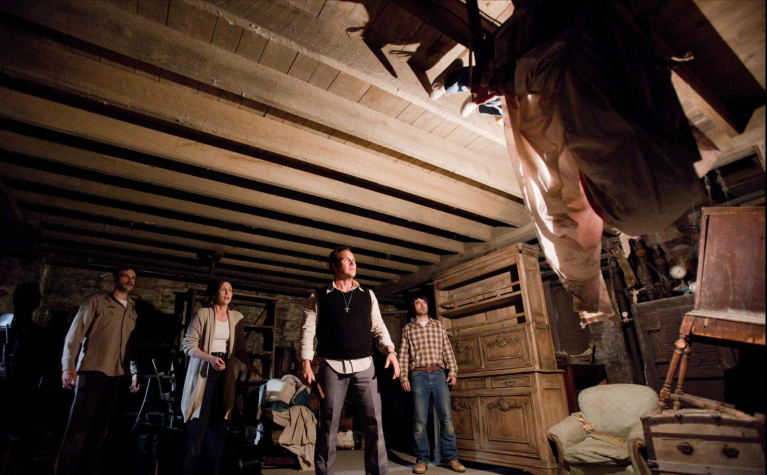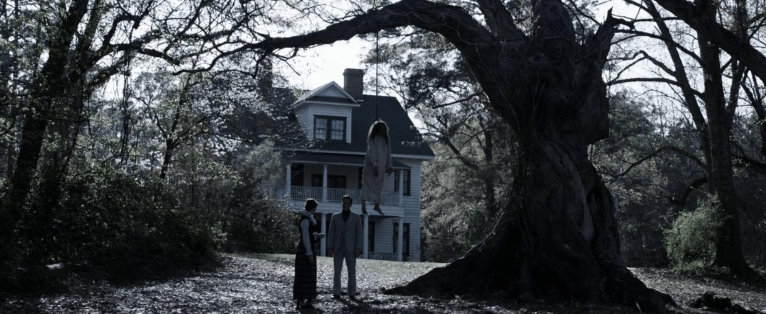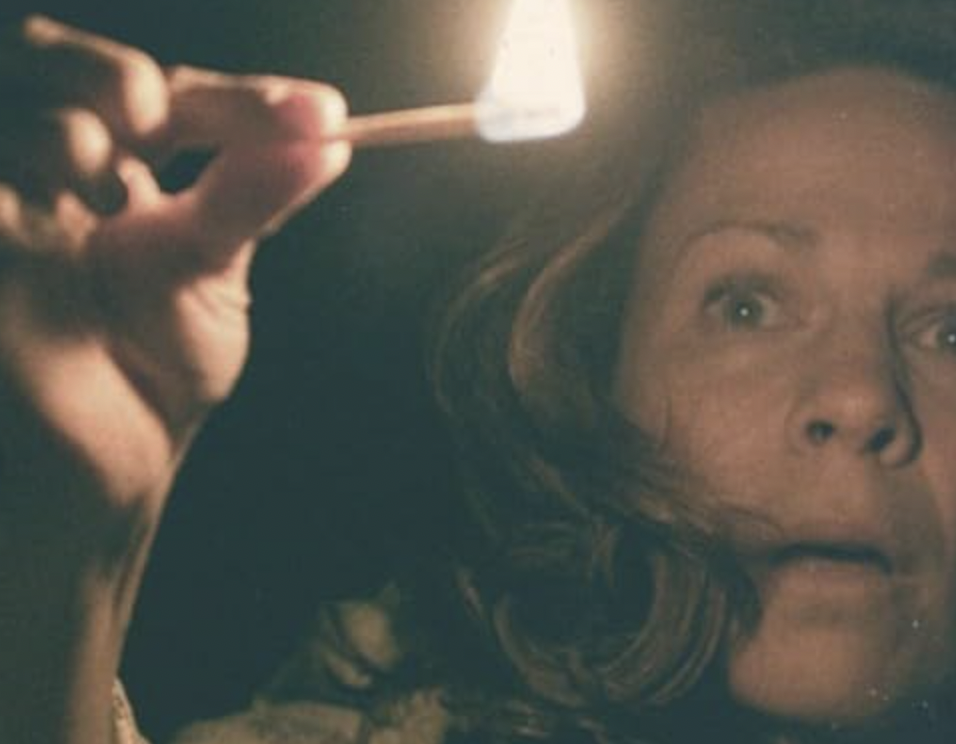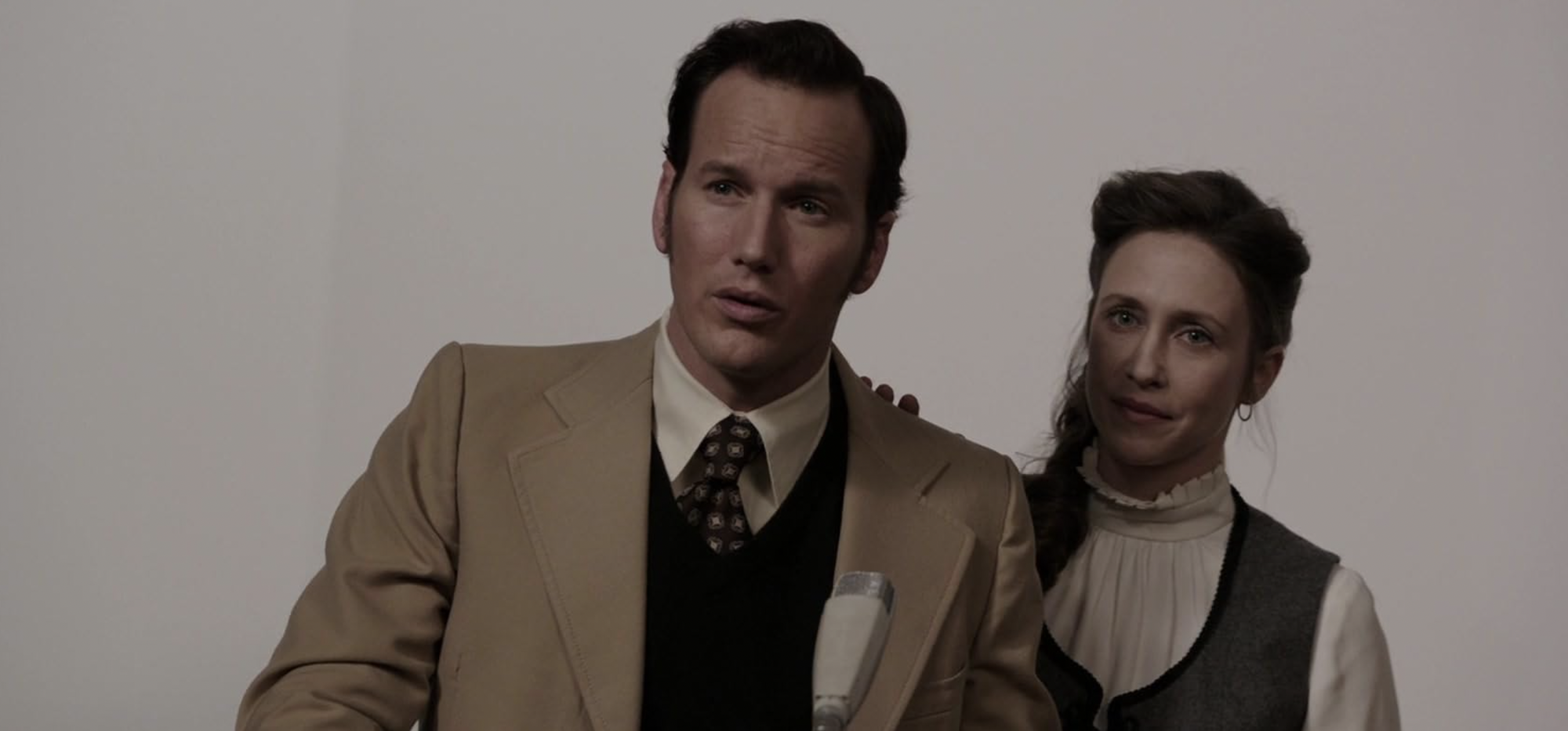10 Years Later and James Wan’s ‘The Conjuring’ Is Still a Masterclass in Jump Scares
James Wan is a master of jump scares, and ‘The Conjuring’ has some of the best ones in history. Let’s look back at the film’s scariest frights for its 10th anniversary.

Over the years, jump scares have become synonymous with “cheap scares,” as horror movies with little-to-no originality or substance work to create adrenaline-spiking thrill rides. The closing of the medicine cabinet to reveal a masked murderer in the mirror. The opening of a shower curtain to reveal a dead body laying in the bathtub. A moment of utter silence as a protagonist slowly examines a cursed dwelling — only for a screeching cat to jump into the frame.
These are examples of lazy jump scares — dated tactics that horror enthusiasts have come to expect, garnering much-warranted eye-rolls from viewers who paid good money to watch a hodgepodge of hokey horror happenings. Rather than taking the audience’s intelligence and familiarity with genre traditions into account, the creators either assume stupidity or fail to accept an audience with a shred of space-specific knowledge. It’s an insult. It is cheap. Yet, when a creator takes the audience’s genre knowledge into account — when a creator knows the history and basis of jump scares well enough to sculpt something surprising and effective — you get a film like James Wan’s The Conjuring. During an interview with That Shelf, Wan defended jump scares, explaining the oft-neglected difficulty involved in executing quality ones:
…Great jump scares are really hard to pull off. I just don’t think people out there understand it enough, and people don’t give it enough credit because a great jump scare is really hard to design. It is as hard as making any kind of film. But people equate jump scares with cheap scares, and they’re not the same at all.
James Wan

The Conjuring premiered to critical acclaim on July 19, 2013, and, according to a 2020 study, the film is the third scariest movie when ranked by average heart rate. Wan also happens to be the only director with three movies in the top 10 on this list, including Insidious (at number 1), and The Conjuring 2 (at number 7). On the 10th anniversary of this horror masterpiece, let’s look back at the film’s three most noteworthy jump scares (in order of appearance), examining why each one is distinct, noteworthy, and utterly terrifying.
“Hide and Clap” in the basement
The door slams in Carolyn’s (Lili Taylor) face as she stands atop the staircase to the basement, and she goes tumbling down — each bang of her body against the wooden stairwell reverberating with a pain-striking intensity. Yet, it is not until she climbs back up the staircase (locked in with no light) that the anticipation sets in. She begins lighting matches, as she and those at home wait for a demonic figure to appear at the spark of a flame. The match goes out. She lights another one. The figure doesn’t appear. Rather than awarding audiences with a mangled monstrous face across from her terrified one, the camera lingers over to her ear, and we hear an innocent voice utter, “Want to play hide and clap,” turning the Perron family’s innocent game into a terror-inducing device. It’s an auditory scare, as opposed to a visual one. Yet, the lighting of the matches implied a visual fright was imminent; thus, Wan uses expectation violation to throw the audience off his scent. The boy’s voice supplies the first little jump, and then there’s a moment of silence and stillness. Mere seconds feel like minutes until his little hands appear in the corner of the frame to clap twice by her ear… and we elevate from our couches.
It’s a one-two punch. Punch one: unnerving, but manageable. The jump was delivered. Yet, punch two draws your eye to the corner of the screen — where horror enthusiasts almost never forget to look. But, James Wan’s direction and Lili Taylor’s captivating state of tension hold the viewer’s gaze at center screen, making this jump scare one that not only understands a horror viewer’s knowledge but anticipates it and exploits it.

As she holds the match before her following the ghost’s words, we wait for a mangled figure to perform an Exorcist-like spider-crawl up the staircase or a floating ghost to come rushing toward her, but no. The fright will not come at her, it will tease her from the shadows, and it does the very same to us at home.
Bathsheba atop the armoir
Cindy is sleepwalking again, knocking her head on the wooden armoir in Andrea’s bedroom. Andrea puts Cindy to sleep in her bed, but the banging continues. It’s coming from inside the closet. She slowly approaches the armoir, as Cindy awakens behind her. Andrea throws the closet doors open to reveal no more than hanging clothes. A brief reprieve from the heightened state of anxiety begins to settle in. We take a breath. It’s over…until Andrea turns around to look at her sister, whose petrified-frozen gaze is resting ever-so-slightly above the armoir.
Andrea looks up and there’s Bathsheba in all her haunting glory — pale skin, rotting teeth, yellow eyes. And this time, it’s not just a warning. She jumps down to attack like a wild beast — coming at her with all fours as if she is going to cannibalistically devour her. Bathsheba’s appearance is scary enough, and the attack just sends the heartrate into flight-or-fight territory.

The misdirection here is key. The inside of the closet is expected. It’s hinted at from the very start of the movie. Lili comes upon the closet during a game of hide and clap with her youngest daughter, and this is not the first time Cindy has unconsciously meandered to the creepy, antiquated piece of furniture. Not to mention, the camera never lingers above the armoir to indicate space there; thus, viewers weren’t cued in to expect such a placement for demonic dwelling.
Wan builds to this scare. It’s narratively founded but visually surprising. This jump scare benefits most from patience. It is the polar opposite of a random cheap fright, for it builds upon a preexisting foundation. Wan relies on earlier scenes that have instilled in viewers a certain fascination with the inside of the wardrobe.
Nancy gets a free haircut
A cross falls to the ground, as Nancy’s hair begins to rise from her head. At first, it’s just flyaways as if rubbed with a balloon. Suddenly, these few hairs become a clump, as she’s flung across the room, glass windows shattering as her body smacks the wall and hits the floor. But it’s not over. She is then dragged across the room via her hair by an invisible figure, and it doesn’t stop until Lorraine Warren (Vera Farmiga) grabs a pair of scissors and does what must be done: chop, chop. Yet, it is the initial raising of Nancy’s hair and subsequent ricocheting of her lifeform that sends the shock. Her body is reduced to no more than a lightweight toy for the demon to toss around like a baseball. The extent of the demon’s power hits home here.
Hairs raising, lights flickering, crosses falling — all horror devices that tend to warn of a lingering presence. However, these moments are usually in place to solely build anticipation. They often keep the suspense heightened while managing to hold the “full-out” scare for a later time. When Nancy’s hair begins to elevate, it’s subtle. It’s unassuming. So, it’s not exactly foreboding of imminent danger. Yet. the moment it becomes a clump is the exact moment she is flung. There is no time to process what’s going to happen. It happens immediately.

Wan, rather than relying on anticipatory devices to do just that — build anticipation — uses them to provide a sort of false reprieve for horror know-it-alls (a somewhat tense one, but a respite nonetheless). His choice to build suspense and immediately satisfy it is what is so shocking here because it’s untraditional. There’s usually a longer wait time between the build-up tactics and the big fright.
Wan is a master at subverting expectations and exploiting traditional tactics to make his jump scares superior to the masses. 10 years later and The Conjuring remains a horror triumph to beat.
